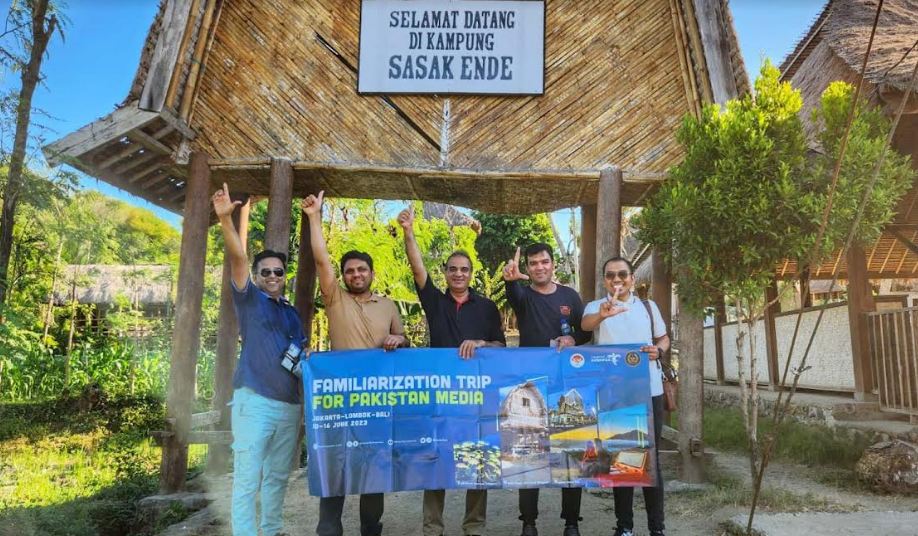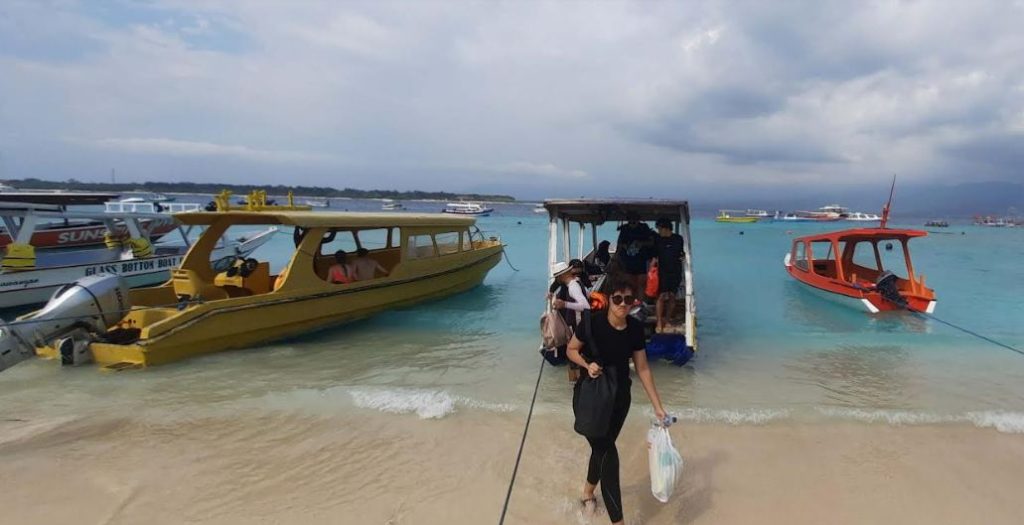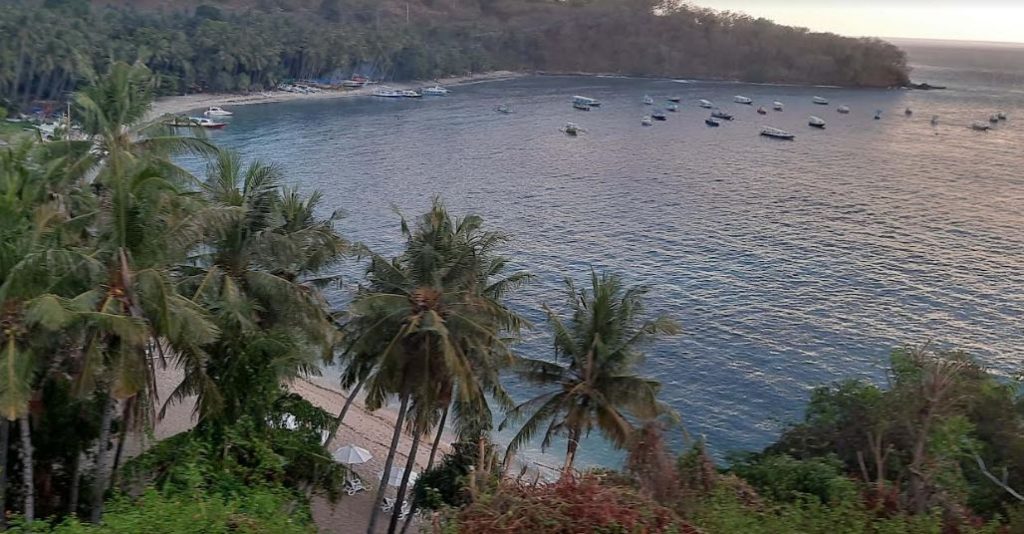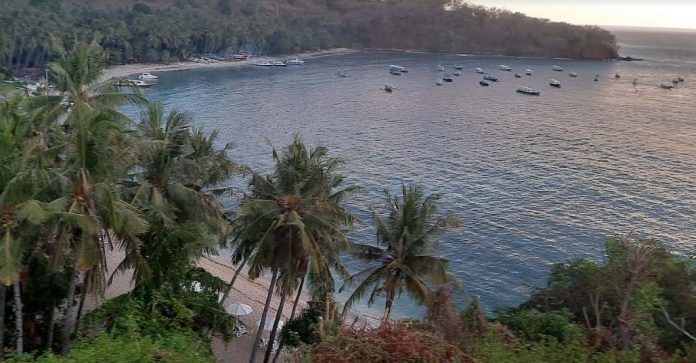Travelogue
—————
Ansar M Bhatti
In Lombok
I had heard a lot and read articles about the Lombok Island, which is nestled in the West Nusa Tenggara province, but was ostensibly thrilled and amazed to visit this exotic place as part of the FAMTRIP organized by the Indonesia embassy in Islamabad in collaboration with the Indonesian Tourism and Creative Economy Ministry. The island that is located close to iconic tourist destination Bali, Lombok is known for its stunning landscapes, beautiful beaches, and vibrant culture. The Island population comprises 85 percent of Muslims yet the place can rightly be termed as a perfect model of Unity in Diversity.

The capital city of Lombok is Mataram, which is located in the western part of the island. Other major cities and tourist destinations include Senggigi, Kuta (not to be confused with the more famous Kuta in Bali), and the Gili Islands. The word Mataram, as told by our local guide stands out for respect and dignity. “Mata’ is influenced by Hindi, which means Mother. Mataram, a small yet gorgeous town, is located in the Western part of Lombok. It takes almost an hour to reach the main city from the airport. As we were accommodated in the North part of Lombok so it took us almost two hours to reach the Gili Islands, another wonderful tourist attraction in the Wonderful Indonesia. On the way to Gili Islands, we passed by the Capital City of Mataram.

As told by our local guide, Lombok is often referred to as “Bali’s sister island” due to its close proximity and similarities in terms of natural beauty. However, Lombok has its own unique charm and attractions that make it a popular destination for travelers seeking a less crowded and peaceful surroundings. The island is renowned for its picturesque beaches, such as Tanjung Aan, Selong Belanak, and Mawun Beach. Lombok is also home to Mount Rinjani, an active volcano and the second-highest peak in Indonesia, offering opportunities for trekking and breathtaking views from its summit.

The local Sasak culture is prevalent on the island, and visitors can explore traditional Sasak villages, witness traditional ceremonies, and learn about the unique customs and traditions of the Sasak people. On our way to the hotel from the airport our first stop was at a village called Sasak Ende. The population of this village may not be more than 200 inhabitants yet it presented a true picture of traditional Indonesian countryside lifestyle. People were welcoming and hospitable. As is a tradition and culture even in Pakistani villages as well that hospitality is spontaneous and whole-hearted. The idea of such model villages is quite rare but unique and an instant tool of disseminating information about the cultural heritage of the respective countries. This is an area where Pakistan also needs to collaborate with Indonesia in order to promote its culture and village life.
As various reports suggest, in recent years, Lombok has been developing its tourism infrastructure to accommodate increasing visitor numbers. The international airport in Lombok, Lombok International Airport (LOP), serves as the main gateway to the island, with regular flights from major Indonesian cities and some international destinations. Overall, Lombok offers a mix of natural beauty, cultural experiences, and outdoor activities, making it a popular destination for those seeking a tropical getaway in Indonesia.
Access to Lombok is very easy. If you are already in Bali, you can take a ferry from Padangbai or Gilimanuk to Lombok. The ferry ride takes around 4-5 hours depending on the route and sea conditions. There are both public and private ferry services available. The public ferry is more economical, while private fast boats offer a quicker journey but happen to be a little bit expensive.
Nestled off the coast of Lombok, Indonesia, the Gili Islands have emerged as a sought-after tourist destination for those seeking an idyllic tropical getaway. Comprising three pristine islands—Gili Trawangan, Gili Air, and Gili Meno—this archipelago offers a harmonious blend of natural beauty, blue waters, and a serene atmosphere. The island of Gili Trawangan is often described as the Party Island. And it looked so when we reached there. A lot of hustle and bustle; huge influx of tourists, mostly from the Western countries makes it a perfect destination for those who want to see nature at its best.
The Gili Islands are renowned for their stunning beaches, characterized by powdery white sands and crystal-clear waters. Each island has its own distinctive charm: Gili Trawangan boasts a lively beachfront with a bustling atmosphere, while Gili Air offers a more relaxed vibe and tranquil stretches of coastline. Gili Meno, the smallest of the three, entices visitors with its secluded beaches, ideal for a romantic escape or peaceful solitude. I will remember the Gili Meno because there I did for the first time in my life the snorkeling exercise. It was indeed a daunting task for persons like me who do not know how to swim, to perform this drill in the deep sea, albeit with the life jacket.
Underneath the turquoise waters surrounding the Gili Islands lies a breathtaking underwater world teeming. Scuba diving and snorkeling enthusiasts will find themselves in awe as they explore the underwater treasures, encountering graceful sea turtles, colorful tropical fish, and even the occasional reef shark. With numerous diving schools and centers scattered across the islands, both beginners and experienced divers can partake in unforgettable underwater adventures, our guide informed us.
For those seeking adventure beyond the beaches, the Gili Islands offer a variety of thrilling water sports and island-hopping opportunities. Rent a kayak or paddleboard and venture out into the ocean, or embark on a glass-bottom boat tour to witness the mesmerizing marine life without getting wet. We also took the glass boat on our way to the islands, though on our way back a speed boat transported us from the Gili to the The Kayana resort where the delegation was offered dinner by the hotel management.
The Gili Islands have managed to retain their charming, laid-back island atmosphere, even as they have gained popularity among tourists. These islands are predominantly car-free, relying on horse-drawn carts known as cidomos or bicycles for transportation, further enhancing the relaxed ambiance. Engage with the friendly locals, immerse yourself in their rich cultural heritage, and savor the delicious local cuisine, featuring freshly caught seafood and traditional Indonesian dishes.
The Gili Islands Lombok, with their enchanting tropical beauty, abundant marine life, and laid-back island culture, provide an unforgettable escape from the pressures of everyday life. So, pack your bags, leave your worries behind, and embark on an unforgettable journey to the mesmerizing Gili Islands. Here the Indonesian government and tourism ministry also deserve credit the way they have developed the infrastructure in these areas. It was undoubtedly an uphill task to revive the industry after the covid pandemic but the Indonesian authorities have done it in a miraculous manner. It is therefore expected that by next year the tourism industry would be fully revived to pre-pandemic levels.
Full coverage of the visit to Lombok shall be published in the coming issue of Centreline magazine.












